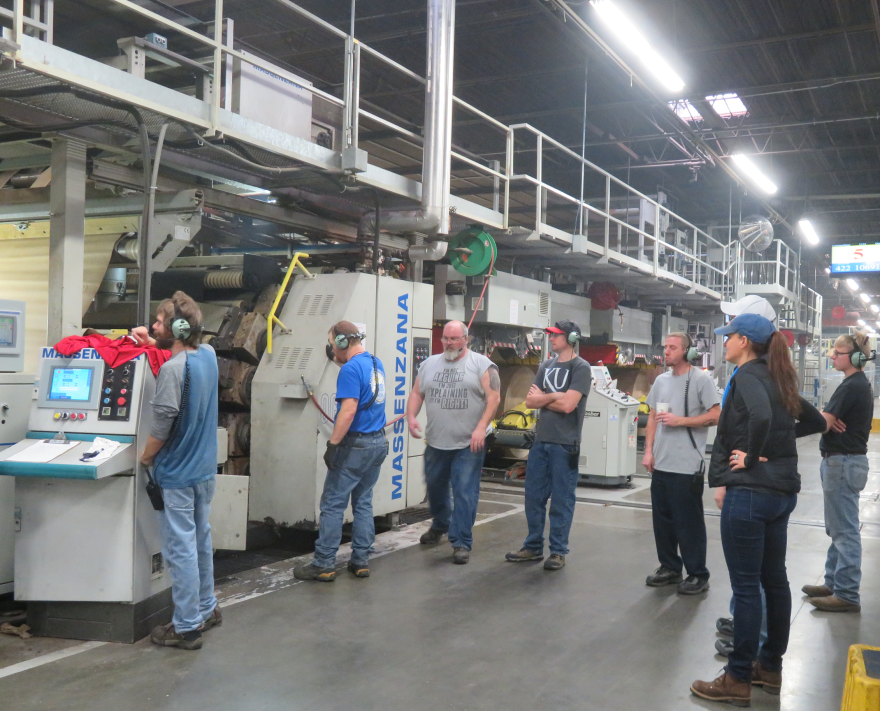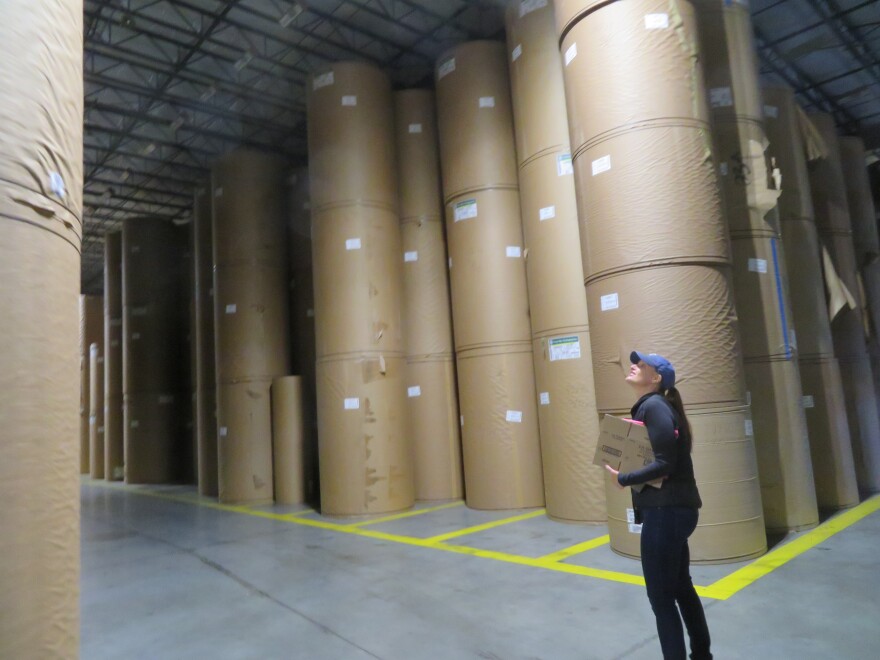Cardboard has a smell.
You notice it as soon as you walk into the glass-encased Kansas Focus Gallery at the Nerman Museum of Contemporary Art, where eight of May Tveit’s cardboard sculptures emerge from the walls like sentries, layers of flat, precision-cut cardboard stacked into pyramids arranged in various rectangles. You recognize the smell; you just weren't expecting it in an art gallery.
But why not? As Tveit's exhibition makes clear, cardboard is an evocative medium.
“There’s something happening that I didn’t expect in terms of their architectural presence and their archetypal, symbolic presence,” Tveit says of her sculptures.
The shapes might remind some viewers of public plazas surrounded by concrete steps. Up close, the terraced lines of corrugation make shadows like rows of corn stubble in a winter field. From farther away, a couple of the sculptures feel like featureless totem poles.
“Other people have said they reminded them of church floor plans or rooftops,” Tveit says. "I could see them being translated into other materials like corten steel or aluminum or concrete or stone."
Besides showing her work around town and internationally for almost 20 years, Tveit is a design professor at the University of Kansas. This cardboard project came from her unique residency over the last two years at the Lawrence Paper Company factory, where she's been taking students on field trips for years.

The 130-year-old Lawrence Paper Company makes everything imaginable out of cardboard: Huge industrial boxes, beer cartons, retail display cases for places like Starbucks. The factory, in an industrial park north of Interstate 70, is enormous, like several airplane hangars, with semi-trucks parked at loading docks. It operates nearly 24-7, with men feeding machines and driving fork lifts and steel-roller conveyors sparkling like rivers running across the floor.
Tveit could spend as much time here as she wanted and roam freely. She had a desk in the design department in a room off of the factory floor, where she could make drawings and sketches. Factory workers made sheets of corrugated cardboard for her, which she cut on a prototyping table that was essentially an automated X-Acto blade.
She found inspiration everywhere.

“Yes it’s an essential product being made here, corrugated cardboard – but I really became interested in the box as a physical thing, an emotional thing, a psychological thing,” she says.
“I just think about the box as a generic product that’s designed to hold, to hide, to protect, to transport the useful and useless contents of our lives. And then thinking about the self, the box as the self.”
Tveit unpacked all of that for her sculptures at the Nerman, working with flat layers of cardboard.
“I was really intrigued by the box in its two-dimensional, flat, splayed-out form, (when) it hasn’t been assembled, hasn’t been labeled yet in order to fulfill its purpose in life, which is to hold, to hide, to protect, to transport.”

Specifically, she used a packaging-design template for what’s known in the industry as a "universal box."
“The label 'universal box' made me think about universal truths, universal values, universality in terms of being a human being.”
So perhaps it shouldn't have surprised her when, she says, "I woke up one day thinking, 'Oh my gosh, I think these are self-portraits.' It might sound funny, but I feel like these are some of the most personal works I’ve ever made."
Either vertically or horizontally, each of the pieces is, at its longest, 68 inches, which is her height. She imposed certain rules regarding the geometry of each piece, and gave all of them titles with personal relevance.
“I’ve labeled them ‘The Well,’ ‘The Window,’ ‘Purgatory,’ ‘The Road,’ ‘Say Yes,’ ‘Look Up,’ ‘You and Me,’ ‘Me and You.’ Those are spaces I’ve spent considerable time in.”
This might sound like a lot of weight for cardboard to carry, but you don’t have to spend a lot of time inside the Lawrence Paper Company factory to realize cardboard is a remarkable medium. For Tveit, it has "magical features."
“I am so amazed by its strength and its durability, the nuance of the engineering science of this paper product," she says. "It comes from trees. It moves. It’s alive.”
May Tveit's "Universal Boxes," through January 28 at the Nerman Museum of Contemporary Art, Johnson County Community College, 12345 College Boulevard, Overland Park, Kansas, 66210; 913-469-8500.
C.J. Janovy is an arts reporter for KCUR 89.3. You can find her on Twitter, @cjjanovy.





